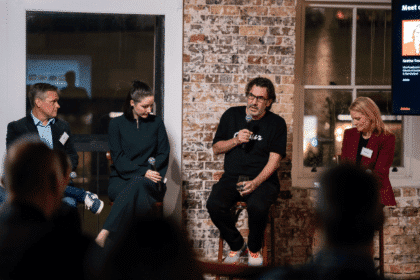In this op-ed, Graham Webster (pictured above), pitch doctor and CEO of Enth Degree, weighs in on the biggest change to media buying for many years — the much-hyped release of VOZ.
VOZ data released was launched with much fanfare last week. For those that don’t know, OzTAM said that “Virtual Australia, or ‘VOZ’ is the foundation of Australia’s new ‘Total TV’ reporting standard. VOZ brings together broadcaster viewing on TV sets and connected devices (connected TVs, computers, tablets and smartphones) to provide all-screen, cross-platform planning and reporting for Australia’s television industry.
“VOZ provides powerful new insights for advertisers, their media agencies and broadcasters. Its benefits span advertising campaign planning and post-evaluation, and VOZ can also inform broadcasters’ programming and sales strategies”.
We are now seeing VOZ figures within the trade media daily, but despite the audacious claims of the TV industry, it appears that at this stage at least, it is limited to being a platform to promote the largest numbers possible for a television program’s audience.
If I were a media owner, I would be doing this too. After all, it is all about the “sell”.
But what about the “buy”?
Buyers buy markets, not network placement (well, not if they are working the edges for their clients).
And what about capital city buys? Programmes traditionally experience varying levels of support in different markets. The most obvious being AFL and NRL, but it is true of entertainment and news as well.
The way the networks report on combined metropolitan and regional numbers is not how campaigns are bought. Show me a television campaign that has an identical metropolitan and regional schedule and I’ll show you a $3 note.
BVOD activity can be bought directly with the network but is overwhelmingly purchased programmatically, and on a CPM ‘volume’ basis. Yes, I know there are sponsorship deals and spot buys, but this is a small proportion of BVOD buys. There is a high cost of entry to limit scheduling to only the top rating programmes on BVOD.
Having an understanding of a BVOD programme’s audience across all platforms is nice to know, but when you’re buying BVOD ‘spots by the kilo’ (i.e., limited consideration to placement) to generate reach, the individual programme audience is a low-level consideration.
I canvassed a number of media buyers and am reliably informed that the media buying industry is currently not capable of planning, trading or reporting on VOZ data. One buyer commented that this would occur “… maybe by the end of the year, but more likely 2025.”
So the VOZ fanfare from the networks is all about presenting the largest numbers per programme possible. Great for the programming department, and to indicate to buyers the full extent of a program’s national audience, but not a (yet) practical planning, buying or post-evaluation currency.
The ability to plan, buy and post-report total television schedules across all screens to assess net reach will be a great development for media buyers in the quest to optimise television campaign efficacy.
In an increasingly fragmented media world, reach is the real value of any media asset. And while agencies continue to review total screens’ impact, VOZ numbers are just part of the solution.
With Foxtel building its own measurement system, these numbers will likely be excluded from VOZ analysis. These 4.5 million homes obviously have a big impact on schedule reach. YouTube impressions are a separate issue again. The total reach of the ‘screens schedule’ will continue to be at best an estimation.
I am old enough to remember when the news/trade media reported a programme’s audience by its total people average, TARP. As numbers shrunk, the currency switched to 000’s. VOZ is the latest change to trade media audience currency.
VOZ numbers represent the high tide mark for FTA performance.
Responsible buyers will continue to look at the low tide to ensure delivery of their communication objectives!








